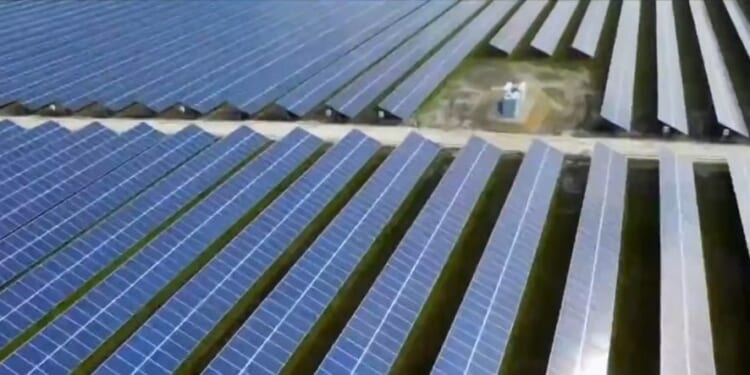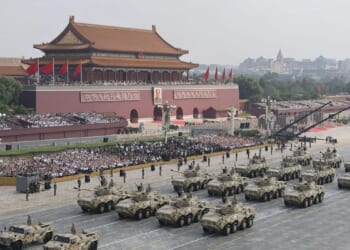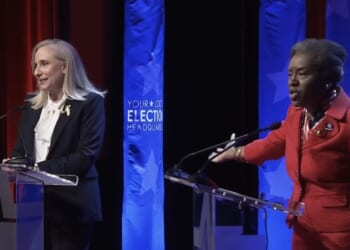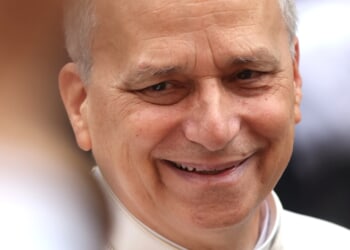The sun will soon be setting on the Ivanpah Solar Power Facility in California’s Mojave Desert. Boosted by $1.6 billion in taxpayer-backed loans in 2011, the gargantuan project was hailed by President Obama’s first energy secretary, Ernest Moniz, as “an example of how America is becoming a world leader in solar energy.”
Instead, it has become yet another example of central planners squandering taxpayer money on an ill-conceived green-energy boondoggle. Covering five square miles of the sun-drenched Mojave Desert, 65 miles southwest of Las Vegas, Ivanpah features three 459-foot towers and 173,500 computer-controlled mirrors known as heliostats. “The mirrors reflect heat from the sun to a receiver mounted on top of the tower,” energy consultant Edward Smeloff told the New York Post. “That heats a fluid. It creates steam [that spins] a conventional steam turbine. It is complicated.”
So complicated, in fact, that the project ran with breathtaking inefficiency. Since going into operation in 2014, Ivanpah, built at a cost of $2.2 billion, never came close to meeting its boosters’ lofty expectations. In the world of solar energy, Ivanpah found itself unable to compete with conventional photovoltaic installations, which themselves are unable to meet the soaring demands of electricity-hungry artificial intelligence (AI).
But whatever its shortcomings in producing electricity, Ivanpah has been a super-efficient killer of birds. The light generated from the mirrors’ reflection of the sun can reach temperatures of 1,000 degrees. Birds unfortunate enough to fly over the “clean-energy” facility could be burned alive in the intense heat. According to the Association of Avian Veterinarians, Ivanpah is believed to be responsible for at least 6,000 bird deaths each year,” the Post reported.
News of Ivanpah’s impending demise coincides with President Trump’s recent address before the United Nations in New York, in which he lambasted green energy. “We are getting rid of the falsely named renewables,” he told the assembled U.N. delegates in September. “The primary effect of brutal green energy policies has not been to help the environment, but to redistribute manufacturing from developed countries … to polluting countries that are making a fortune.” Lest anyone miss the message, he added:
“The entire globalist concept of asking successful industrialized nations to inflict pain on themselves and radically disrupt their entire societies must be rejected completely.”
Taking A Backseat To China?
The Trump administration’s rejection of wind and solar energy, along with the accompanying narrative of fossil fuel-driven climate change, has sparked concerns in the investment community that the U.S. runs the risk of ceding global leadership in green energy to China. “America has given up its effort to challenge China in the renewable energy industries that increasingly power the global economy,” The Wall Street Journal recently warned.
“Companies in the second quarter cancelled more green-manufacturing projects than they announced for the first time on record, according to the Massachusetts Institute of Technology and the Rhodium Group,” the Journal added. “Clean-energy investment plunged 51% from the previous quarter.”
Such concerns assume that wind and solar power, battery storage, and electric vehicles will spearhead global energy use in the decades to come. If so, then China will indeed be the top dog in energy production and infrastructure, because it has an iron grip on these sources’ global supply chains. But what if the tide is already running out on green energy?
This is precisely the message Trump delivered at the U.N., and his administration’s embrace of fossil fuels, nuclear power, and even geothermal energy plays to America’s strengths — and underscores China’s weaknesses. Bereft of domestic oil and natural gas thanks to unfavorable geology, China seized the opportunity presented by short-sighted decarbonization policies adopted elsewhere in the world. Beijing became the supplier — not of choice, but of necessity — for the raw materials found in wind turbines, solar panels, and EV batteries. And it did so with an economy whose chief source of power is coal, the much-demonized fossil fuel targeted for extinction by the Obama and Biden administrations, as well as by camp-following governments in Britain, Germany, Spain, and elsewhere.
This is a game the Trump administration refuses to play. America’s creaky electric grid desperately needs reliable baseline energy to power the nation’s homes and businesses. Energy-hungry, AI-driven data centers require gobs of electricity 24/7/365 that is best generated on-site by small modular nuclear reactors (SMRs). Furthermore, the U.S. can flex its muscles by exporting its abundant oil and liquefied natural gas (LNG), and even coal, to eager customers worldwide. In this emerging world, there should be no place for subsidized, intermittent wind and solar power, much less the soon-to-be shuttered Ivanpah monstrosity in the Mojave Desert.
And if the powers that be in Beijing still want to be the global leaders in green energy, let them.
Bonner Russell Cohen, Ph. D., is a senior policy analyst with the Committee for a Constructive Tomorrow (CFACT).
(Featured Image Media Credit: Screen Capture/PBS NewsHour)
All republished articles must include our logo, our reporter’s byline and their DCNF affiliation. For any questions about our guidelines or partnering with us, please contact [email protected].
DONATE TO BIZPAC REVIEW
Please help us! If you are fed up with letting radical big tech execs, phony fact-checkers, tyrannical liberals and a lying mainstream media have unprecedented power over your news please consider making a donation to BPR to help us fight them. Now is the time. Truth has never been more critical!
Success! Thank you for donating. Please share BPR content to help combat the lies.
We have no tolerance for comments containing violence, racism, profanity, vulgarity, doxing, or discourteous behavior. Thank you for partnering with us to maintain fruitful conversation.
















